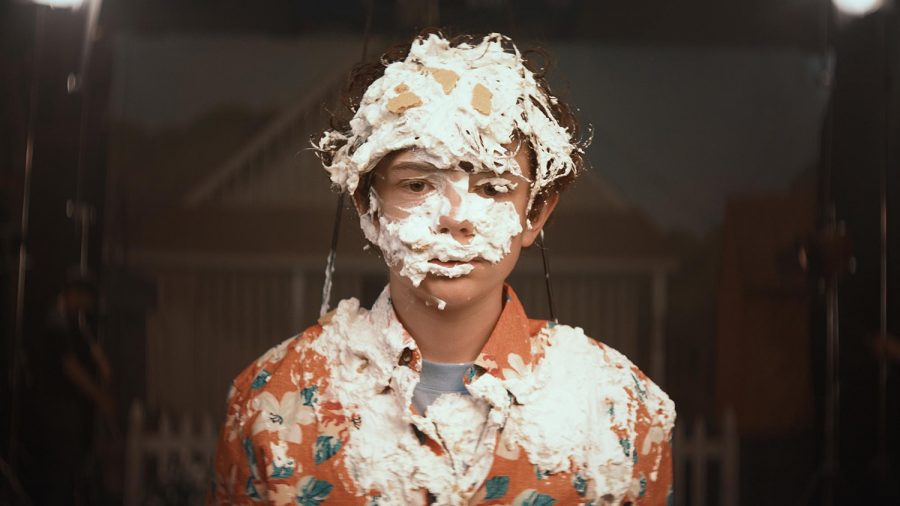Honey Boy serves as therapy to writer Shia LaBeouf, and has the same effect on its viewers
Honey Boy tells the story of a child star growing up with an ex-rodeo clown, alcoholic, fame-obsessed father and the PTSD he endures as he grows older from it.
Noah Jupe stars in "Honey Boy." MUST CREDIT: Amazon Studios
March 3, 2020
“A seed has to totally destroy itself to become a flower. That’s a violent act, honey boy.”
Honey Boy, an Amazon original film, unfolds chaotically. The opening scene features main character Otis (played by Lucas Hedges), on a movie set surrounded by sounds of gunshots and explosions. Otis does a stunt where a bomb explodes, hurling him backward. After the director calls cut, the stage manager helps him back to his scene position from the rig he did the stunt from. This disorderly opening sets the scene beautifully for the rest of the film.
Honey Boy tells the story of Otis, who was forced into acting by his father, James (played by Shia LaBeouf). James is an ex-rodeo clown, alcoholic, and felon. From a young age, James sets his son Otis up for auditions in hopes that he will achieve the fame he never had. They live in a run-down motel, where James rigorously trains Otis for auditions and roles.
Their turbulent relationship only worsens, shown through sequences from older Otis in court-ordered rehab, to younger Otis (played by Noah Jupe), from the events that trigger his flashbacks.
Shia LaBeouf wrote the script for Honey Boy drawing from experiences with his own father, which the role of James is contrived from.
RELATED: Binge Break: There’s light in the darkness in All The Bright Places
LaBeouf gave the directing reins to Alma Har’el, who does a spectacular job at representing the relationship between Otis and his father while also providing insight to the characters as individuals.
Through the eyes of LaBeouf, the viewer can feel Otis’ frustration and anger as if it is their own. He is consumed by rage that stemmed from the way his father treated him; the lack of affection, the constant pressure to achieve what he couldn’t, and the violent results of him standing up for himself. Otis doesn’t understand the point of therapy and frequently lashes out at his therapist and everybody else who attempts to help him because, in the past, no one attempted to save him from the cause of the PTSD in the first place.
Written by a child star about a child star, the movie could have felt foreign to the viewer. However, through Har’el and LaBeouf, the viewer can heal from anything in their own lives that evokes the same pain Otis feels.
It’s nearly impossible to not feel the heart-wrenching emotions in the scenes where a 12-year-old Otis begs his father to be a better person. The same chest-tightening emotions erupt from the scenes with older Otis in rehab, rehashing his memories and trying to make sense of his trauma.
The film ends in one of Otis’ dream-like flashbacks where he follows a chicken to the motel where he lived as a child. He finds his father there, in his clown attire, and they have a sort of reconciliation by the pool. Otis tells James he’s writing a movie about him, and then takes his father’s motorcycle onto the open highway. The ending of the film shows Otis’ freedom from his father’s memory, a rewarding ending for the character and the viewer alike.














